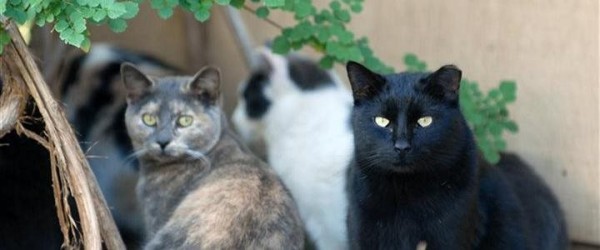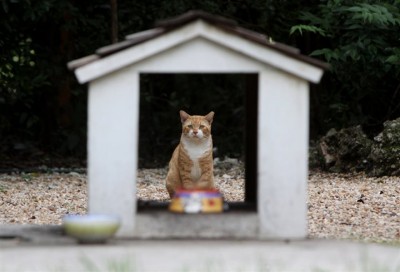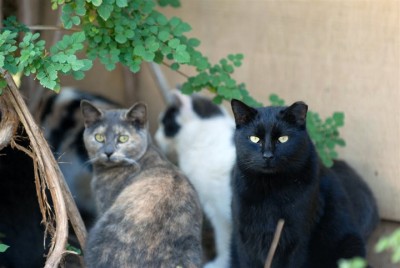 (BPT) – Shocking statistics show that nearly three-quarters of the cats who enter our nation’s animal shelters each year, most of whom are free-roaming and un-owned, are killed. Fortunately, Americans’ love of animals doesn’t end with the pets that live in their homes; their care extends to the millions of cats who do not have owners and simply live throughout towns and cities. Across the country a growing number of communities are adopting humane ways to manage these populations and reduce the number killed in shelters.
(BPT) – Shocking statistics show that nearly three-quarters of the cats who enter our nation’s animal shelters each year, most of whom are free-roaming and un-owned, are killed. Fortunately, Americans’ love of animals doesn’t end with the pets that live in their homes; their care extends to the millions of cats who do not have owners and simply live throughout towns and cities. Across the country a growing number of communities are adopting humane ways to manage these populations and reduce the number killed in shelters.
People favor the idea of trapping, neutering and returning (TNR) cats over lethal injection by a ratio of nearly three to one, a survey by national animal welfare organization Best Friends Animal Society reveals. Furthermore, the health and welfare of the cats (38 percent) and public health (31 percent) were the most important factors in their choice, the survey found. Through TNR, cats are humanely trapped and taken to a veterinarian who spays/neuters them, tips one ear as a visual signal that this cat has been sterilized, and then returns the animals to their outdoor home to live out their lives.
“Uncontrolled population growth among homeless cats isn’t good for anyone – the animals or the community,” says Gregory Castle, CEO of Best Friends. “Yet adoption isn’t always feasible for cats that are used to living outdoors.”
 Many TNR advocates use the term “community cats” to describe populations of homeless felines because many of the cats don’t fit the typical image of “feral.” They live in close proximity to, and interact with, humans, accepting food and affection from people in the community. They may be strays who have become lost or were abandoned, or they may be the offspring of strays, having never lived in a human home. Rather than belonging to no one, these cats become companions to people throughout the community. No one is sure exactly how many community cats live in the U.S., but 30 million to 40 million is a widely accepted estimate.
Many TNR advocates use the term “community cats” to describe populations of homeless felines because many of the cats don’t fit the typical image of “feral.” They live in close proximity to, and interact with, humans, accepting food and affection from people in the community. They may be strays who have become lost or were abandoned, or they may be the offspring of strays, having never lived in a human home. Rather than belonging to no one, these cats become companions to people throughout the community. No one is sure exactly how many community cats live in the U.S., but 30 million to 40 million is a widely accepted estimate.
“As communities are recognizing that killing the animals is neither humane nor effective – and is quite costly to taxpayers – TNR programs have emerged as a kinder means to reduce populations while also ensuring that free-roaming cats stay as healthy as possible,” Castle says.
TNR programs address concerns for public health and the health of the animals. Cats are not only neutered when trapped, but also can be vaccinated against diseases, which helps protect community health. Neutered animals tend to be less territorial and are less stressed over finding mates and rearing young.
 Volunteers in communities across the country, and many municipalities, operate TNR programs. Un-owned cats are humanely trapped, neutered and vaccinated, then released into the community to live out their natural lives. The programs have proven very effective; a University of Florida study found a decrease of 66 percent in cats brought to a shelter from a ZIP code where a focused TNR program was in place. Programs in Randolph County, North Carolina, and on the campus of the University of Central Florida also significantly reduced the size of cat colonies.
Volunteers in communities across the country, and many municipalities, operate TNR programs. Un-owned cats are humanely trapped, neutered and vaccinated, then released into the community to live out their natural lives. The programs have proven very effective; a University of Florida study found a decrease of 66 percent in cats brought to a shelter from a ZIP code where a focused TNR program was in place. Programs in Randolph County, North Carolina, and on the campus of the University of Central Florida also significantly reduced the size of cat colonies.
The Albuquerque, New Mexico, and San Antonio, Texas, Community Cats Projects, partnerships of Best Friends Animal Society and PetSmart Charities, Inc., have been particularly successful. In Albuquerque, for example, shelter deaths of cats and kittens are down 88 percent, from more than 2,800 during the first nine months of 2011 to 337 for the same period this year. And in San Antonio, where intake numbers were rising dramatically before the program’s launch in April 2012, intake of cats and kittens is now declining sharply, and shelter deaths are 84 percent lower than in 2011.
Neutering community cats ensures they won’t produce more un-owned cats, and humanely returning them back into the community allows them to live out their lives. Information to help communities and volunteers launch TNR programs can be found at bestfriends.org/communitycats.
“The results of our public opinion survey confirm what we see firsthand in communities around the country – there is widespread support for TNR and community programs,” Castle says. “It’s hardly surprising, really. These programs are not only better for cats, they’re better for communities, too.”

